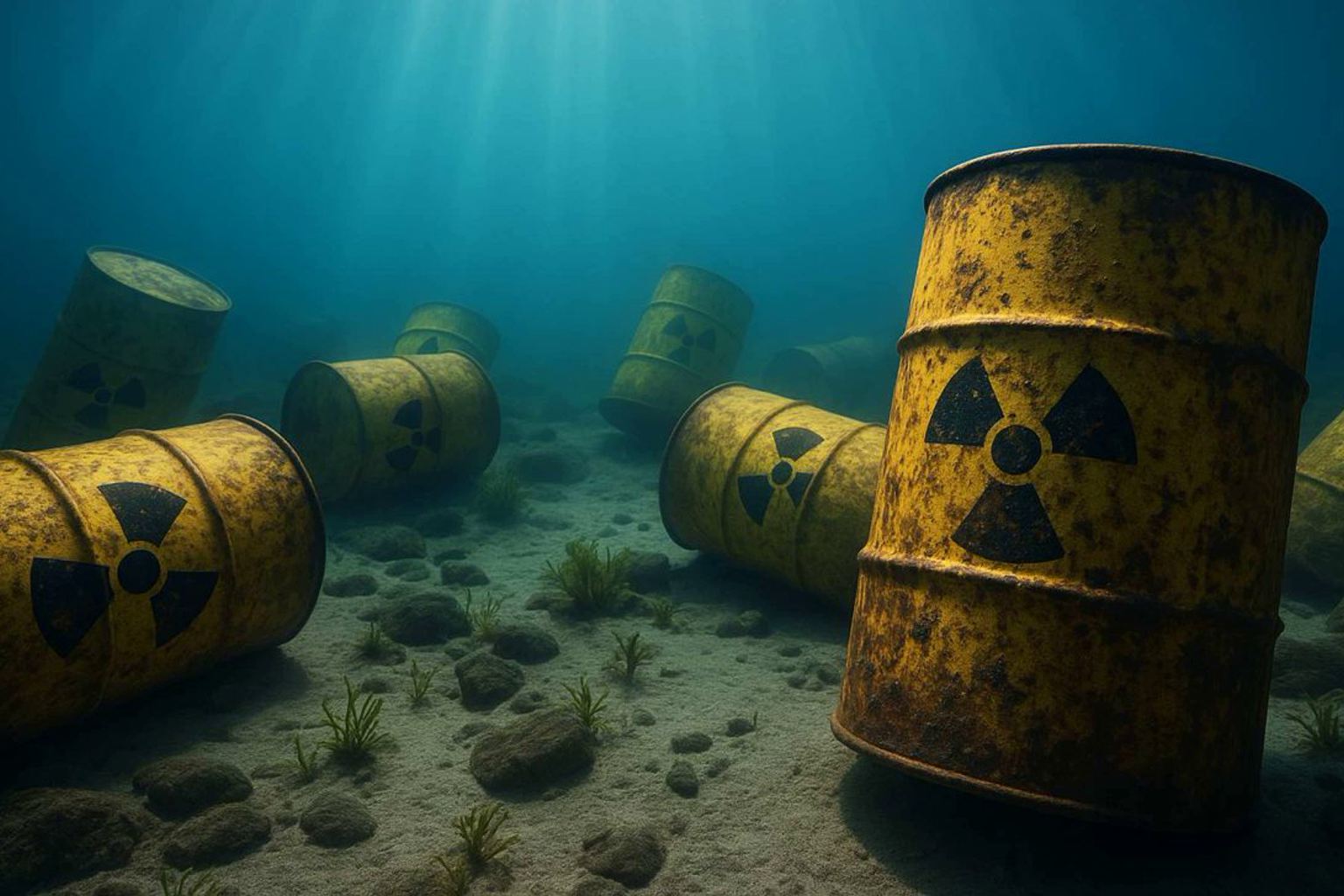Over 200,000 radioactive barrels have been resting quietly at the bottom of the Atlantic Ocean for decades, hidden from sight and surrounded by mystery. These barrels, once dumped into the sea as a way to dispose of nuclear waste, raise urgent questions about their current condition and the long-term effects on ocean life. Now, an extraordinary team of French scientists is gearing up for a mission to uncover the truth and map every barrel’s location.
The story dates back to a period when nuclear waste management was still in its infancy. In the years following World War II, oceans were considered vast and endless sinks for waste, with deep trenches thought to be lifeless and safe places to store hazardous materials.
Between 1946 and 1990, over 200,000 barrels filled with radioactive waste were dumped far off the Atlantic coast, at depths reaching nearly 13,000 feet. It was a practice believed to be practical and harmless — until awareness grew about the real consequences for marine ecosystems.
Mapping the Atlantic’s radioactive legacy
Despite the ban on sea disposal of radioactive waste established by the London Convention in 1990, these barrels remain off the coast and largely unexplored. Their exact condition and impact on the environment are still unknown, creating a gap in understanding what happens when radioactive material meets deep-sea ecosystems.
This summer, a pioneering expedition named Nodssum will set sail to investigate this enormous underwater dumping ground, covering roughly 2,300 square miles of abyssal plain. Using advanced high-resolution sonar technology, researchers will create precise maps of the area, searching for the barrels and assessing how they’ve moved or deteriorated over time.
What makes this mission particularly groundbreaking is the deployment of UlyX, an autonomous submarine capable of navigating these crushing depths. UlyX will provide vital close-up observations of the barrels and collect sediment, water, and marine life samples right in their vicinity. This will prepare the scientific community for a follow-up mission, zeroing in on environmental impacts with even greater detail.
Unveiling the ecological impact of radioactive waste
The thought of these barrels quietly sitting on the ocean floor made me reflect deeply on how human actions—even those taken decades ago—continue to ripple through natural systems in ways we might never have imagined. What happens when radioactive substances slowly leak into one of the planet’s most mysterious realms? How does it affect the intricate web of ocean life that thrives in the deep?
Marine scientists worry about the potential for radioactive contamination to bioaccumulate, meaning the toxin could build up in creatures over time and pose risks beyond the initial dumping site. This raises questions about how far-reaching the damage might be, affecting not just bottom-dwelling species but even larger animals higher up the food chain, including ones humans rely on.
The ocean is often pictured as a nearly untouched wilderness, but nothing could be farther from the truth. It’s filled with stories of human impacts hidden deep beneath the waves. Understanding the true extent of that legacy is essential if we want to protect the ocean’s future. As one researcher from the expedition put it, “This is about taking responsibility and ensuring our oceans can recover and remain a vibrant source of life.”
Innovative technology driving ocean discovery
What excites me the most about this mission is the cutting-edge technology being used to shed light on a problem previously considered unsolvable. The high-resolution sonar system works like a giant underwater radar, mapping the seabed down to the smallest detail. Combined with UlyX, which can work independently for hours navigating the intense pressure and darkness, this is a level of exploration never before possible.
Every sediment and water sample will be analyzed to detect changes in chemistry and trace radioactive elements. Meanwhile, examining the health of marine organisms around the barrels will help scientists piece together how these remnants of the nuclear era are influencing life deep below the surface.
Beyond science, the international cooperation among French research institutions and oceanographers reflects a broader hope—that we can come together to address environmental challenges created by our own history. It serves as a powerful reminder that accountability is not just about the present but about healing past wounds.
I remember once learning about past industrial practices that caused great environmental harm and feeling a mix of disbelief and sadness. But moments like these also offer hope: hope that we are learning, adapting, and trying to do better. The Nodssum mission is a testament to humanity’s perseverance and determination to protect our planet.
What do you think about this ocean cleanup effort? Can technology help us fix the mistakes of the past? Have you ever felt inspired by a scientific mission? Share your thoughts and stories below and let’s open up a conversation about the ocean’s hidden stories and why they matter more than ever. Join in, comment, and share this article to spread awareness about what lies beneath our waves.
